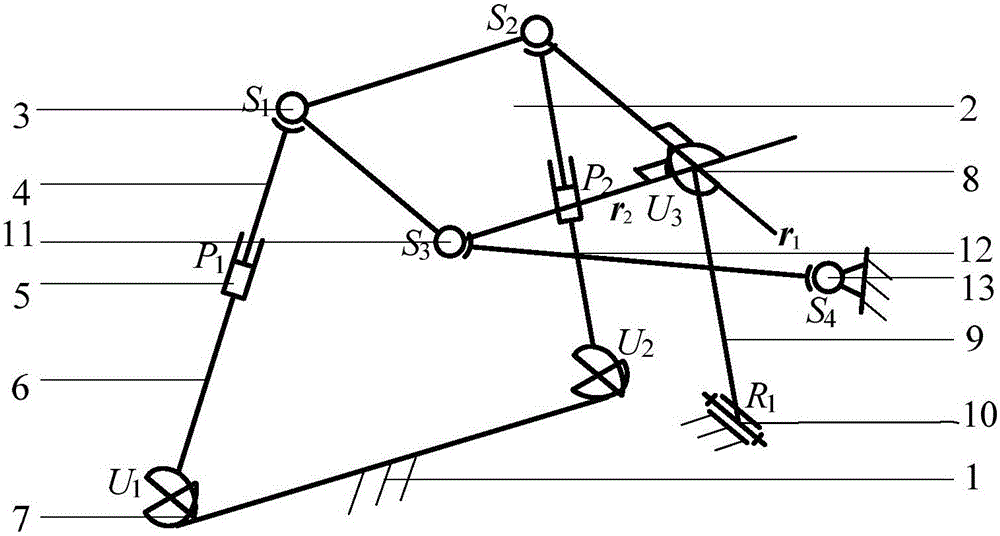Four-branch-chain and two-degree-of-freedom rotary parallel mechanism with two continuous rotating axes
A rotating axis and four-chain technology, applied in the field of robotics, can solve the problems of insufficient bearing capacity, difficult processing and manufacturing, and the absence of two continuous rotating axes, and achieve simple kinematic model, kinematic calibration and control. Effect
- Summary
- Abstract
- Description
- Claims
- Application Information
AI Technical Summary
Problems solved by technology
Method used
Image
Examples
Embodiment Construction
[0009] exist figure 1 In the schematic diagram of the four-branched two-degree-of-freedom rotating parallel mechanism with two continuous rotation axes, the four branched chains connect the fixed platform 1 and the moving platform 2, and the first and second branched chains in the four branched chains have the same structure. One end of the upper link 4 of the first and second branch chains passes through the ball pair S 1 3 is connected with the moving platform, and the other end of the upper link passes through the moving pair P 1 5 is connected with one end of the lower connecting rod 6, and the other end of the lower connecting rod passes through the Hooke hinge U 1 7 is connected with the fixed platform; one end of the connecting rod 9 of the third branch passes through the Hooke hinge U 3 8 is connected with the moving platform, and the other end of the connecting rod passes through the rotating pair R 1 10 is connected with the fixed platform; both ends of the connec...
PUM
 Login to View More
Login to View More Abstract
Description
Claims
Application Information
 Login to View More
Login to View More - R&D
- Intellectual Property
- Life Sciences
- Materials
- Tech Scout
- Unparalleled Data Quality
- Higher Quality Content
- 60% Fewer Hallucinations
Browse by: Latest US Patents, China's latest patents, Technical Efficacy Thesaurus, Application Domain, Technology Topic, Popular Technical Reports.
© 2025 PatSnap. All rights reserved.Legal|Privacy policy|Modern Slavery Act Transparency Statement|Sitemap|About US| Contact US: help@patsnap.com

